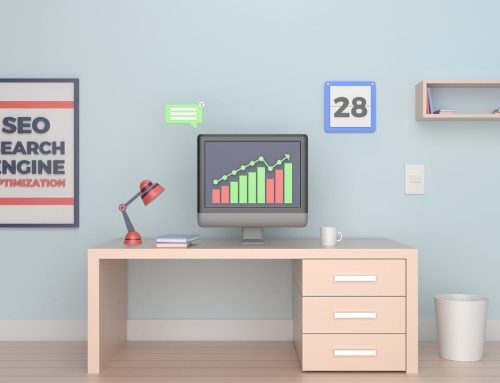“The beauty of SEO is that, instead of pushing a marketing message onto folks who don’t want to hear what you have to say, you can reverse-engineer the process to discover exactly what people are looking for, create the right content for it, and appear before them at exactly the moment they are looking for it.”
– Cyrus Shepard, founder of Fazillion Media
There’s still a long ways to go until retailers see the rainfall of Black Friday, Cyber Monday, and Christmas once again, but that doesn’t mean that there isn’t optimization to be done for the holidays.
When most people think about the holidays, images of eating turkey around the family table, presents under trees, and swarms of frenzied and frenetic shoppers (both online and offline) trying to take advantage of the best deals imaginable are all conjured up.
In the case of retailers, this is a fair train of thought considering that the Nation Retail Federation reports 2016 November and December retail sales ringing in at an astonishing $658.3 billion.
The “Christmas season,” however, is not the only time when retailers experience a spike in sales.
With holidays like Mother’s Day, Father’s Day, and Independence Day right around the corner, shoppers will be altering their search habits with the intent of making seasonal purchases. And if retailers want to get a piece of that action, a temporary SEO overhaul is in order.
Here is what you need to know to drive more traffic and sales for any holiday or season that inspires consumers to spend some cash.
Timing is Everything
Generating SEO results normally takes months; even years can sometimes pass before a company achieves its ultimate goal.
For that reason, retailers need to plan their campaigns well ahead of time in order to not miss out on the shopping madness.
BigCommerce, an eCommerce platform provider, released a study which notes that, “. . . if you want to participate in over 90 percent of the search traffic, you need to post your content to websites at least 45 days in advance.”
Content and inbound marketing director for 1-800-PetMeds, Vanessa Penagos-Pino, thinks that 45 days is not early enough and advocates businesses begin their planning two to four months in advance.
Do keep in mind, however, that these timeframes are not hard and fast rules, meaning that there will be variations from industry-to-industry and brand-to-brand.
In order to establish the correct timing for your business, study the trends taking place on various channels leading up to a holiday or seasonal event; begin studying keywords associated with the upcoming occasion and optimize pages on your website for these phrases while consolidating others that aim to rank for the same keywords; these only serve to diminish ranking potential.
To help you optimize for the holidays in the most prosperous way, let’s take a closer look at this blueprint.
Seasonal SEO Strategy
The first thing you need to do in preparing a holiday-driven SEO campaign is study which seasonal events are actually worth optimizing for.
This will be different for many industries so the best way to understand your company’s sweet spots is to study your brand’s data metrics to see which events drive the most sales and conversions year-over-year; these are the holidays you want to be a part of.
Next, begin analyzing Google Trends to establish emergent search trends congruent with those celebrations. Use this information to begin constructing a keyword list that will help you optimize your site and content for the upcoming event.
The ultimate goal here is to identify keywords and phrases that are relevant to the holiday itself and your company’s products or services. And remember, user intent is now much more important than keywords themselves so it is necessary to focus your efforts on the consumer intent around making a purchase.
With your keyword list in hand, begin crafting content that supports these keywords and targets the user intent of buying; post this to your site with optimized title tags, meta tags, and other SEO-focused elements.
Additionally, you will want to update some of your existing pages to infuse fresh copy, headers, title tags, etc.
This should go without saying, but be sure to share your newly crafted content across your social properties to begin driving traffic to those pages.
It’s also a good idea to leverage social media adverts, Google AdWords, and Yelp advertisements (if you have a brick and mortar location).
After setting your campaign into motion, be sure to monitor the results as they happen to verify that your content is producing the intended effect. Analyze underperforming pages to identify problem areas and optimize those further.
Measuring Seasonal Campaign Success
As with any marketing campaign, measuring performance is vital to achieving success. The main difference between an everyday SEO campaign and a seasonal one is that it must be measured in close to real-time as there is a very small window to achieve the desired results.
Study your site’s organic traffic for the timeframe the campaign will run, dating back three years. Compare organic page visits, bounce rates, time on site, and goal completions in Google Analytics to verify that your master plan is working.
From there, identify weak points on your site and optimize those accordingly.
When it comes to developing a seasonal SEO campaign, it’s not much different than launching a normal effort to rise in the SERPs. The main difference, and likely the biggest challenge, is getting the timing right so that your content gains enough traction to reach consumers at the appropriate time.
Start getting your plan together early, and you are far more likely to capture more of those sweet holiday dollars all throughout the year.






